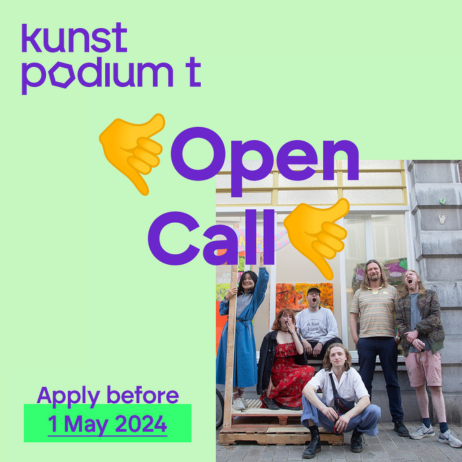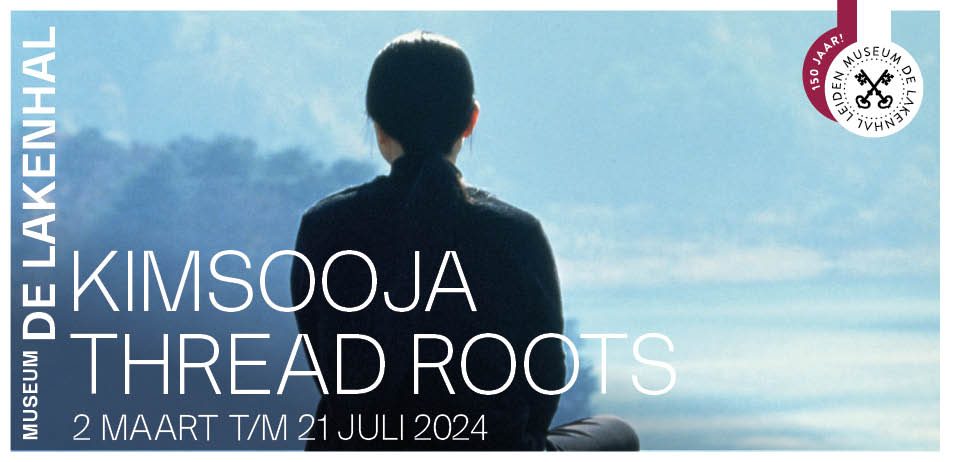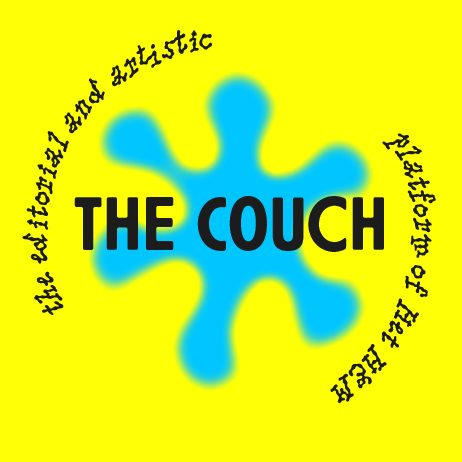On mechanical eyes, digital ghosts and dirty hands
Photo: Sophie Wurning
A young archive beyond scary and funny
RR: Can you explain the title and the subtitle of your show, Beyond the Violet End of the Spectrum — Visual Documents in the Age of CCTV and Drones?
Beyond the Violet End of the Spectrum refers to a sentence uttered by one of the first photographers, William Henry Fox Talbot. Talbot claimed that photography offers sight beyond the perception of the last colour of the light spectrum that we can see with bare eyes — violet. He was right in the sense that photography could for the first time register certain movements and visual aspects that the human eye cannot perceive, including those manifesting under very deficient light conditions. I use this quote because it has been associated with Spirit Photography, whose practitioners claimed that the camera could capture spectres in light-sensitive emulsion. The first spirit photograph happened by accident. Do you know how early analogue photography worked? You had a black box with a light entrance — an aperture. In this camera obscura, a glass plate smudged with light sensitive emulsion would be placed. You would take the lid off the light opening, expose the plate, and then develop it. If you forgot to remove a plate before putting in another, you would get a double exposure. In a double exposed picture, the first exposure is often less prevalent than the second, which may make it appear ghostly. Spirit Photography became a profitable business in the early 1900s. In Boston, a spirit photographer named William Mumler allegedly had an assistant climb into customers’ houses to collect photographs of deceased relatives to use in the double exposure procedure.
There was burglary involved?
Allegedly. Some of these photographs are obvious cases of double exposure. But others capture strange phenomena that have never been explained. Answers could possibly be found if you had access to the original material. A small fissure in the black box of a camera is enough for a bit of light to imperceptibly burn the film and produce a ghostly figure.
Does your research involve looking at historical spirit photographs to perform a detective-like analysis?
No. I’m looking at the history of audiovisual techniques that are said to produce ghostly phenomena. Alongside that I’m observing CCTV [Closed-Circuit Television — RR] and drones, as these are the dominant means of surveillance today. I’m investigating if so-called ghostly phenomena manifest in these new media. The first phase of my research begins with the exhibition. I don’t have military drone imagery showing ghosts yet.
Do you expect to encounter this?
Not really. I’m observing the creation process of images that seem to be reporting facts, and their validity as documents. For example, I compare actual military drone imagery with fake military drone imagery that’s used in gaming. You can find run-throughs of such games online meant to teach you how to play. You can’t distinguish the game material from actual military footage if it wasn’t for the captions. If you don’t know you’re watching game visuals, the level of emotional reaction they evoke is quite intense. On the other hand, if you watch military drone imagery and believe you’re watching a game, a different experience arises. The exhibition will have several boxes with screens displaying real and game-based drone imagery without informing viewers which is which. I leave it to the visitor to work it out by comparing the imagery on a purely visual level.
Why?
Involving my research in the exhibition provides me an opportunity to reobserve my archive while expanding it. The material I’m working with is so incredibly charged. Watching drone imagery is confronting. You watch people dying, people trying to survive. And then games are made out of such visuals. At first I thought I’d use only real drone imagery in the show. Later I decided this could be too heavy for the exhibition experience. I considered that using similar imagery from games beside actual military drone footage would provoke a different reaction. I’m very curious about this potential shift.
How will you use the reactions?
I’m not conducting a formal survey with visitors. The exchange will be based on dialogue. The drone archive is not just an assemblage of found footage but also an artwork. Besides compiling images of violence, I also focus on how the aesthetics of the physical dispositif I’m building work within the specific space of the gallery. You could say I research how to present such an archive in a site-specific way.
Does the onsite research in the exhibition mean that the works are still unfinished?
The onset is fixed, but the materials are still being produced and edited. I’ll be at work in the space adding to the CCTV-spectre film and to the drone archive. There will also be an onsite camera obscura, where part of the gallery space will be darkened and outside light will reproduce live images by projecting them on a wall. I’ll also use the camera obscura as a proper pinhole and dark room, by exposing and developing photographic paper in the exhibition. In that sense all works in the exhibition are unfinished and on-going.
Why do you find it important to share your research process, and what role does theory play in it?
We’re living in an era when we are constantly questioning what is fact and what is fiction. I’m looking at theories of indexicality, among others. Indexicality can be described as the phenomenon of a referent indexing something in the context in which it’s happening. Whether in analogue or digital media, you can trace back the moment that a certain event has occurred and been recorded. In analogue photography, light bounces off an object and sensitizes photographic emulsion. The referent is produced at the exact moment of light inscription, and this can be traced back to the presence of the object in front of the camera. There’s been extensive research concerning indexicality with regard to analogue photography. Several studies have investigated and challenged the validity of the idea that the camera is a mechanical eye allowing for an unmediated inscription — where no human intervention is involved, leading one to believe that a photograph is an objective document.
How does indexicality relate to the digital sphere?
Thirty years ago, all of a sudden the digitalization of our material world gained speed, right? Photography and cinema became commonly digital in the past 10–15 years. There has been a rising notion of the dematerialisation of photographic registration. I don’t agree with that. In my view, the digital is just another form of materiality. In both my previous and current work I study the question of how the referent manifests itself in digital visual registrations. How can you trace it back to its inscription? In analogue photography emulsion reacts physically to light, making the moment of inscription very clear. A digital photo is created with a sensor that roughly translates the light into an algorithm through a very different process that is harder to trace. To analyse this process I lean on semiology and indexicality to look at how you capture time in visual terms. All the media you use and the reproductions you make will be inscribed leaving traces in the final documents, whether analogue or digital. An image transmitted through several channels over the internet, including all the hard drives where it rested, carries some kind of scar left behind by all these passages.
Do you aim to find digital referents?
I’m interested in thinking about their possibility. I’m not going to watch a video and try to actually trace the imagery back. But what I may do is force the conditions for certain phenomena to occur.
Does that make you a digital ghost hunter?
I appreciate the doubt that may take place when observing spectral imagery. I’m not a ghost buster. I can only create or accelerate phenomena that are inherent to the medium.
Is your approach scientific?
Not really. Perhaps you could say it’s based on a form of critical analysis, part of the tradition of the Humanities. I’m making art work though, exploring several hypotheses, but also investigating the medium that I work with, in and for itself. Something that distinguishes me from scientists is that I work on an aesthetic level. I’m making artistic decisions. I’m not scrutinizing found footage only to prove something. The theory I study is fascinating, but the articulation of the imagery is in a way self contained. The theory and the artwork evolve alongside each other. They are both autonomous practices. I strive to keep that freedom.
How did you get interested in spirit photography?
I am intrigued by the idea that in Western society we live as if there is no death. If you look on the internet for live imagery from places associated with death, there is no footage. I’m not talking about crime — that doesn’t interest me. For example, there are webcams streaming from funeral parlours, but you can only observe a funeral if you are part of the family of the deceased with a log-in code for the site. You can remotely observe hospitals only while they’re being built. Once opened, there are cameras everywhere in these places but you cannot access them. I started wondering where and how is death documented? How do you see it, how do you engage with it? In theory we’re living with death constantly. Our cells die, fruit rots, all materials are constantly in decay. But if death is not happening in your family, directly affecting your personal life, it seems to be nonexistent. We live like it doesn’t exist. I started looking into this and encountered imagery of ghosts. The more I saw, the more interesting it seemed to edit some of these images together to understand their aesthetic and narrative potential. I wondered how ghosts could be so similar all over the world. I collected images from India, Japan, Korea, Mexico, and a lot from America. It’s interesting how they are somehow related. Apparently we share an imagination of what ghosts are supposed to look like.
It seems funny that you are working with CCTV and drones, such mind-boggling technology that it makes ghosts seem almost concrete or comprehensible in comparison.
People respond quite differently to the footage showing ghosts. Some laugh, some get very scared. For me, the first video of made-up ghosts I watched just seemed ridiculous. But after going through a large number of them, I started seeing big differences. Some of the ghost visualizations attracted me, especially the vaporous ones — the fleeting, transparent kind. That these occur across all geographies is intriguing. One would suppose different cultures with different relations to the dead wouldn’t share similar representations, but they do. Shadow people, poltergeist, girls in white night gowns, formless shapes.
How about beauty? You use CCTV imagery that was not meant to be beautiful, simply functional, and then you take it into the aesthetic sphere of art and cinema.
I find that aesthetics are always linked to a specific context of production. I love the deficient optics of the CCTV images, but my approach is not just engaged with matters of beauty or ugliness. It’s anchored in my relation to my medium of choice. If you’re a painter, you observe and determine the speed of a brush stroke. This aspect goes beyond issues of beauty. In my case I question aspects such as the framing, the camera placement, the colour or lack thereof.
Can you give an example?
In some CCTV imagery I may observe very slight movements of the camera that happen because of wind, but in most surveillance footage there are no such movements. Sometimes I recognize imagery that is presented as CCTV material, but is not. I only come across such learning through intense observation. Another example relates to my new film. It’s divided into three parts according to three types of footage: the first, black and white, the second, green, the third, colour. All three types of images display different qualities because the cameras producing them also had different qualities, with specific capture abilities. Whether something is filmed during the day or night influences image quality. At night the pixels will be much larger and the image colour will be green due to night vision mode. These characteristics influence perception of the footage. Working on this film made me more aware of several of these cinematic aspects.
Have you always had this observation talent?
It’s not talent but intense training. After studying art at the Rietveld Academy, I trained with teachers from the London Film School in Lisbon. I learned from extremely experienced professionals about production, directing actors, editing, cinematography, the découpage process, sound design — I’ve learned by doing. I cannot go to the movies for relaxation. It’s always work. It’s impossible not to be aware of the framing, continuity errors, mismatched sightlines, the camera axis, among other things.
Do you consider your artwork to be documentary?
All single shots are essentially documentary. In fiction film, an actor or actress plays a role in a specific way that will only happen once, and can only be captured that single time. Even if you film three hundred takes, each will be different, each will become a document of a specific moment in time that will never return. On the other hand, any aspect of a documentary film has also been carefully constructed. In my view, documentary and fiction can always be considered together in terms of visual imagery and the dispositif of construction.
That’s not the everyday use of the word ‘documentary’…
For me, this is the everyday use I work with. My work always deals with the border between fiction and documentary. This border has been extensively explored in film and media studies, which I build on — this is my take on it.
Your work seems to be very critical and analytical. How does it relate to idealism or even activism?
I focus on observing mediated constructions of reality. There are vast archives of contemporary reality being added to by video surveillance on a daily basis. I believe it’s productive to get our hands dirty with these constantly generated materials to try and influence the narratives being built around them in the near and long term future. You could say there’s an aspect of awareness-raising in my work. How do you influence the potential narratives of CCTV? Can you track back certain events or not? How do you make a distinction between what is fake and what is not? I also bring an affective and a cinematic layer to the CCTV material I use for my films and installations.
What is the engine behind your work, your personal curiosity?
I cannot answer that question with a one-liner. Making art is my way to learn about the world, but also to show the world how I see and experience it. When I was a young child, I had the impression that I was being filmed all the time. At some point, I thought someone would show my whole life back to me, and I would spend the rest of my life watching my life. I’ve always been completely obsessed with cameras and with being behind the camera, being the one that tells the story rather than having the story told about me.
NB On Thursday May 31 Paula Albuquerque’s book The Webcam as an Emerging Cinematic Medium (Amsterdam University Press) will be launched at Eye Film Museum from 7-8.30pm. With an introduction by prof. dr. Thomas Elsaesser, followed by a presentation by Paula Albuquerque.
Solo exhibition ‘Beyond the Violet End of the Spectrum – Visual Documents in the Age of CCTV and Drones’ Paula Albuquerque
13 mei 2018 – 9 juni 2018
BRADWOLFF PROJECTS Amsterdam


